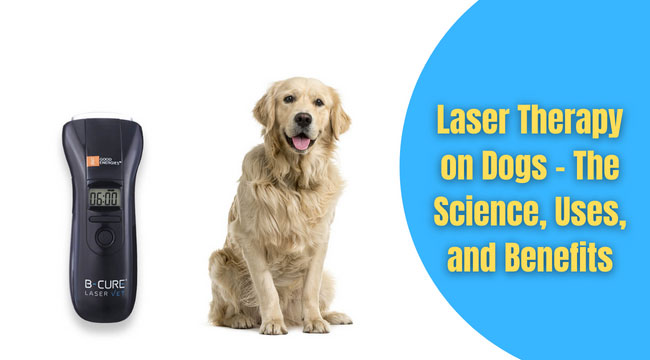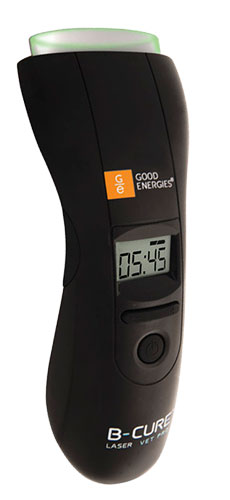
Laser therapy for dogs is a modern treatment that is becoming more popular in veterinary care. Many dog owners are curious about it, especially if their pets have ongoing pain, arthritis, or slow-healing wounds. But what is laser therapy, and how does it help dogs?
Simply put, laser therapy uses special light to help heal your dog’s body. This light goes deep into the tissues and helps cells repair themselves, reduces swelling, and eases pain. It’s a gentle, drug-free way to help dogs feel better and recover faster from injuries or surgery.
Vets use laser therapy for many reasons. It can help dogs with arthritis move more easily, speed up healing after surgery, and even help with skin problems or wounds that won’t heal. Some dogs feel relief after just a few sessions, while others may need more treatments for long-term problems.
In this article, we’ll explore the science behind laser therapy, the different ways it’s used for dogs, and the main benefits it offers. Whether your dog is young and active or older and slowing down, learning about laser therapy can help you make the best choices for your pet’s health.
Laser therapy: science and technology
A laser is primarily a source of light and energy. Lasers, or more specifically optical amplifiers, produce electromagnetic radiation by amplifying light. The word “laser” stands for “light amplification of stimulated emission of radiation.” However, not all lasers are the same. FDA recognizes four classes of lasers based on wavelength and energy output. Generally, lasers are classified based on their power and intended use:
- Class 1 emits the least power and is the safest for everyday use.
- Class 2 lasers produce visible light beams and are more powerful than class 1 lasers.
- Class 3 lasers pose moderate ocular safety risks. The majority of therapeutic lasers fall into this category.
- Lasers of class 4 are very powerful and can cause severe eye damage and skin damage.
Many aspects of everyday life are affected by laser technology. Lasers benefit us in a wide range of ways, from shopping to DVD viewing to document printing. Human and veterinary medicine use lasers to treat a variety of conditions. Laser therapy for dogs is an emerging treatment modality for a variety of ailments.
Laser therapy has many applications
Laser therapy—also known as cold laser therapy (LLLT)—”is the application of light to a biologic system to promote tissue regeneration, reduce inflammation and relieve pain.” LLLT affects body tissues at a cellular level, stimulating benefits like increased blood flow, lymphatic drainage, collagen and enzyme production, and endorphin release. Healing, nerve regeneration, and pain relief are enhanced as a result.
Dermatologists, veterinarians, dentists, physical therapists, and other medical professionals use laser therapy to treat pain, inflammation, and wounds.
Laser therapy for dogs is beneficial in many ways

As part of a multi-modal approach to treating certain dog diseases, veterinarians may recommend laser therapy treatments, including cold laser therapy devices for dogs at home. These conditions include:
- Osteoarthritis
- Hip or elbow dysplasia
- Intervertebral disc disease
- Tendon, ligament, or muscle injuries
- Surgical wounds
- Lick granulomas
- Allergic skin disease
Research in this field suggests that laser therapy may be beneficial to a number of canine conditions, as well as healing and regenerating effects. Laser therapy has been shown to reduce pain and inflammation, improve wound healing, and increase patient comfort, among other benefits.
Laser therapy sessions can be completed on an outpatient basis within 15 to 30 minutes as well as offer medical benefits. Your pet may benefit from laser therapy after just a few sessions, depending on his or her condition and your veterinarian’s recommendation. In pets with chronic diseases or long-standing conditions, treatment may need to be continued for a longer period of time before benefits are realized. Additionally, laser therapy has an excellent safety profile when used properly and with proper eye protection. You can even use laser products at home under the guidance of your veterinarian.
Contact your veterinarian or check out different cold laser therapy devices for dogs to learn more about low-level laser therapy or determine if your dog is a good candidate for treatment.
Red Light Therapy for Dogs
Red Light Therapy for Dogs is a safe and gentle way to support your pet’s health, offering relief from pain, faster healing, and better mobility for dogs of all ages.
How Does Red Light Therapy Work?
Red light therapy works by shining specific wavelengths of red and infrared light onto your dog’s skin. This light goes deep into muscles and joints, where it helps cells repair themselves and boosts blood flow. The process increases energy inside the cells, which speeds up healing, reduces swelling, and eases pain.
Benefits of Red Light Therapy for Dogs
Red light therapy can help dogs in many ways:
- Pain Relief: It is often used to help dogs with arthritis, joint pain, or muscle soreness. Many dogs feel less pain after just a few sessions.
- Reduced Inflammation: The light helps calm swelling and discomfort, which is useful after injuries or surgery.
- Faster Healing: Red light therapy encourages wounds, cuts, and surgical incisions to heal more quickly.
- Better Mobility: Dogs with stiff joints or arthritis often move more easily and comfortably after treatment.
- Healthier Skin and Coat: The therapy can help with skin problems, hot spots, or allergies, making your dog’s coat shinier and skin healthier.
- Improved Energy: Some dogs have more energy and seem happier after regular sessions.
Common Uses
Red light therapy is used for:
- Arthritis and joint pain
- Muscle strains or injuries
- Healing wounds or surgical sites
- Skin conditions like hot spots or dermatitis
- Older dogs with mobility problems
Types of Red Light Therapy Devices
There are different devices for red light therapy, including:
- Hand-held wands and pens for spot treatments
- Therapy wraps and pads for larger areas
- Special crates or beds that shine red light all over your dog’s body
Many of these can be used at home, but it’s best to get advice from your vet before starting any new therapy.
Is Red Light Therapy Safe for Dogs?
Yes, red light therapy is safe for most dogs when used as directed. It is painless and has very few side effects. However, you should always talk to your vet first, especially if your dog is pregnant, has cancer, or has conditions like seizures or photosensitivity. Watch for any unusual reactions, like redness or swelling, and stop treatment if you notice anything concerning.
FAQS.
What is laser therapy for dogs and how does it work?
Laser therapy for dogs is a non-invasive, pain-free treatment that uses special light to reduce pain, swelling, and speed up healing. The laser light helps cells repair themselves and increases blood flow, making recovery from injuries or chronic pain easier for your dog.
What conditions can laser therapy help treat in dogs?
Laser therapy can help dogs with arthritis, joint pain, muscle injuries, wounds, back pain, ear infections, and after surgery. It’s also used for skin issues and helps older dogs with mobility problems feel more comfortable and active.
Is laser therapy safe for dogs?
Yes, laser therapy is very safe for dogs when done by a trained professional. Most dogs feel no pain during the session, and side effects are rare. Sometimes, mild redness or soreness may occur, but these go away quickly.
Does laser therapy hurt my dog during the session?
No, laser therapy does not hurt your dog. Most dogs feel gentle warmth or nothing at all. Many dogs relax or even fall asleep during treatment because it is soothing and comfortable.
How long does a laser therapy session for dogs last?
A typical laser therapy session for dogs lasts between 5 and 30 minutes, depending on the area being treated and the condition. Your vet will decide how many sessions your dog needs for the best results.
Are there any side effects of laser therapy for dogs?
Side effects are rare. Some dogs may have mild redness or slight soreness after treatment, similar to a gentle massage. Serious side effects are very uncommon when therapy is done by a professional.



